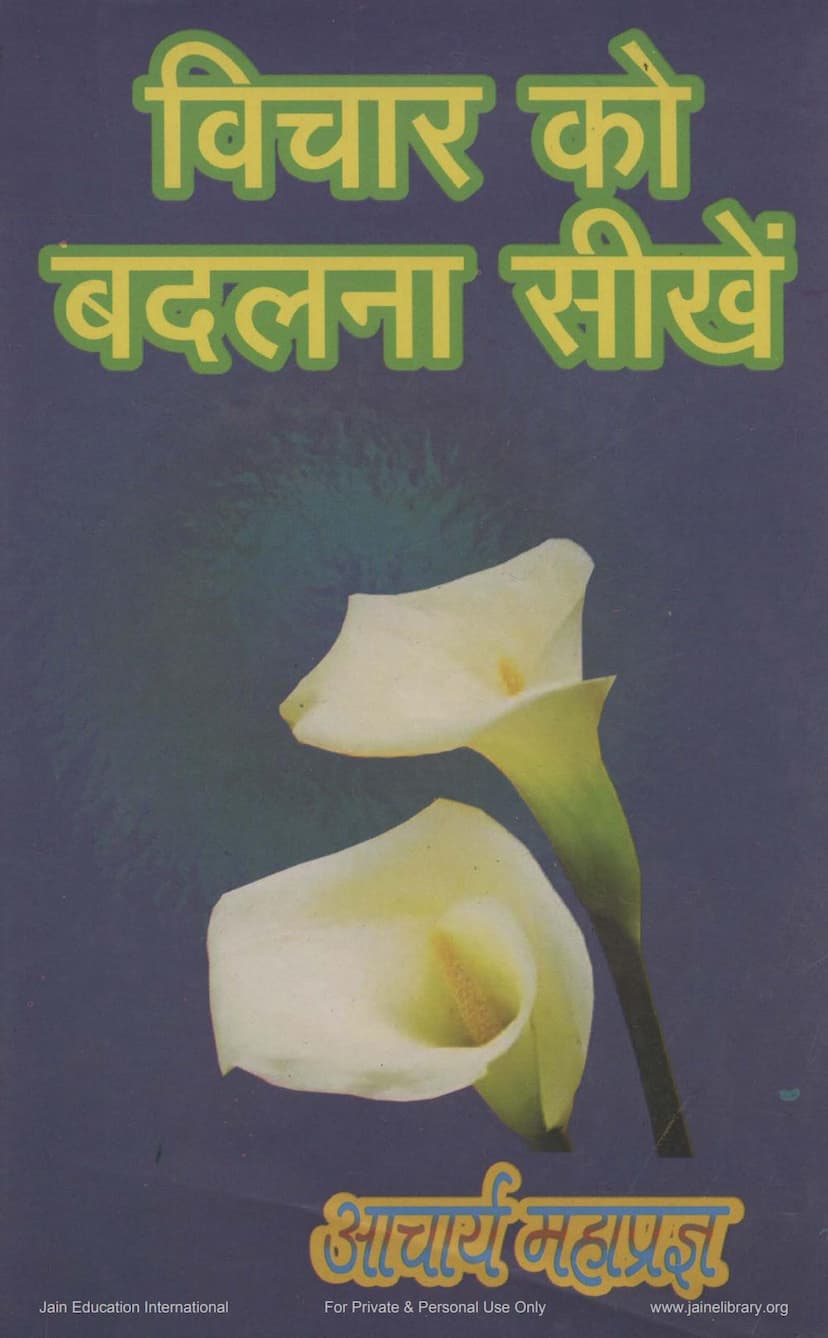Vichar Ko Badalna Sikhe
Added to library: September 2, 2025

Summary
This comprehensive summary is based on the provided text, "Vichar ko Badalna Sikhe" (Learn to Change Your Thoughts) by Mahapragna Acharya.
Overall Theme:
The book, "Vichar ko Badalna Sikhe," authored by Mahapragna Acharya and published by Adarsh Sahitya Sangh, delves into the profound connection between our thoughts, emotions, and overall well-being. It emphasizes that true change and a better life stem from the ability to understand and transform our inner world, particularly our thoughts and feelings. The core message is that by mastering our thoughts and emotions, we can achieve a more peaceful, healthy, and meaningful existence.
Key Concepts and Arguments:
The book can be broadly understood through the following interconnected themes:
1. The Nature of Thoughts and Emotions:
- Thoughts as Messengers: Thoughts are presented as indicators of our inner personality and external influences. They are likened to messengers that convey internal messages outwards. The quality of our thoughts directly reflects our internal state and vice-versa.
- Emotions as the Root: The fundamental source of thoughts is not the thought itself, but rather the underlying emotion or "bhava." The purity of thoughts is directly linked to the purity of emotions. Learning to change emotions is the key to changing thoughts.
- The Mind-Body-Emotion Connection: The book highlights a deep connection between positive emotions, positive thoughts, and a positive lifestyle. A refined lifestyle fosters refined emotions, which in turn lead to refined thoughts.
2. The Importance of Changing Thoughts and Emotions:
- Challenging Static Thinking: The text encourages readers to move beyond rigid, one-sided perspectives. It advocates for embracing dynamism and change, not clinging to thoughts as fixed entities.
- Overcoming Mental Entanglements: Many problems and confusions arise from being trapped within the mind. The path to resolution lies in transcending the mind's limitations and moving closer to consciousness.
- The Transformative Power of Inner Change: By learning to change one's inner state (emotions and thoughts), one can effectively transform their thoughts and ultimately their entire life, leading to purity in actions, behavior, and overall consciousness.
3. Practical Approaches and Guidance:
- The Power of Vivek (Discernment): The ability to discern between what is beneficial (upadeya), what is harmful (heya), and what is neutral (upekshaniya) is crucial for navigating life's experiences and making appropriate choices. This discernment guides our actions (pravritti, nivritti, upeksha).
- Understanding the Source of Behavior: Our behavior is driven by knowledge and experience. Without understanding, our actions remain limited. The book stresses the importance of knowledge in shaping our responses.
- The "Three Pillars" of a Good Life: The text implicitly emphasizes a balance between:
- Inner Living (Nishchaynaya): Staying connected to one's true self and inner reality.
- External Engagement (Vyavaharnaya): Living and interacting with the world through actions and behavior.
- Right Action: Making choices based on knowledge and discernment between beneficial, harmful, and neutral elements.
- The Role of Awareness (Jagrukta): Cultivating awareness of what is happening within and around us is a central theme. This awareness is the foundation for making conscious choices and transforming negative patterns.
- The Practice of Preksha Meditation: While not explicitly detailed as a separate chapter here, the concepts strongly align with the principles of Preksha Meditation, which involves observing thoughts and emotions without judgment, leading to their transformation.
- Holistic Well-being: The book touches upon various aspects of well-being, including:
- Health: Emphasizing the connection between emotions, thoughts, and physical health, particularly highlighting the impact of uncontrolled emotions on conditions like heart disease.
- Lifestyle: Advocating for a balanced and mindful lifestyle, incorporating principles like diet control, exercise, and ethical conduct.
- Relationships: Stressing the importance of harmonious relationships within families and society, built on mutual respect, understanding, and empathy.
- Education: Critiquing current education systems for focusing solely on intellectual development while neglecting character building and emotional intelligence. It calls for an education that fosters holistic growth.
- Peace and Harmony: Connecting inner peace and emotional balance to societal harmony and the absence of conflict.
4. Jain Philosophical Underpinnings:
The book is rooted in Jain philosophy, particularly the emphasis on:
- Ahimsa (Non-violence): Not just the absence of physical violence, but also the non-violence in thoughts, words, and actions, and extending compassion to all living beings.
- Sanyam (Self-control): The discipline of senses and emotions is highlighted as crucial for mental and physical health, as well as for achieving inner peace.
- Vivek (Discernment): The ability to differentiate between what is beneficial and harmful.
- Anekantavada (Multi-perspectivism): Encouraging the understanding of issues from multiple viewpoints to foster harmony and reduce conflict.
- Vitaragta (Detachment): Moving towards detachment from worldly desires and attachments as a path to lasting peace.
In essence, "Vichar ko Badalna Sikhe" is a guide to self-mastery and inner transformation, offering practical wisdom for individuals seeking to cultivate a more positive, peaceful, and healthy life by understanding and transforming their thoughts and emotions, guided by the principles of Jain philosophy.